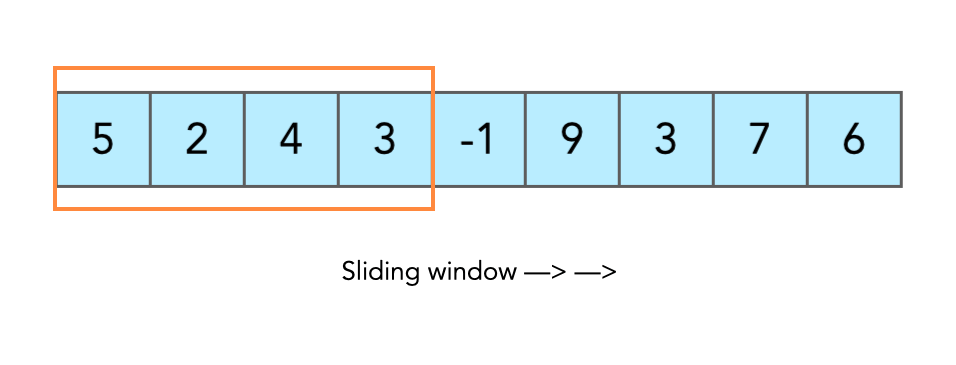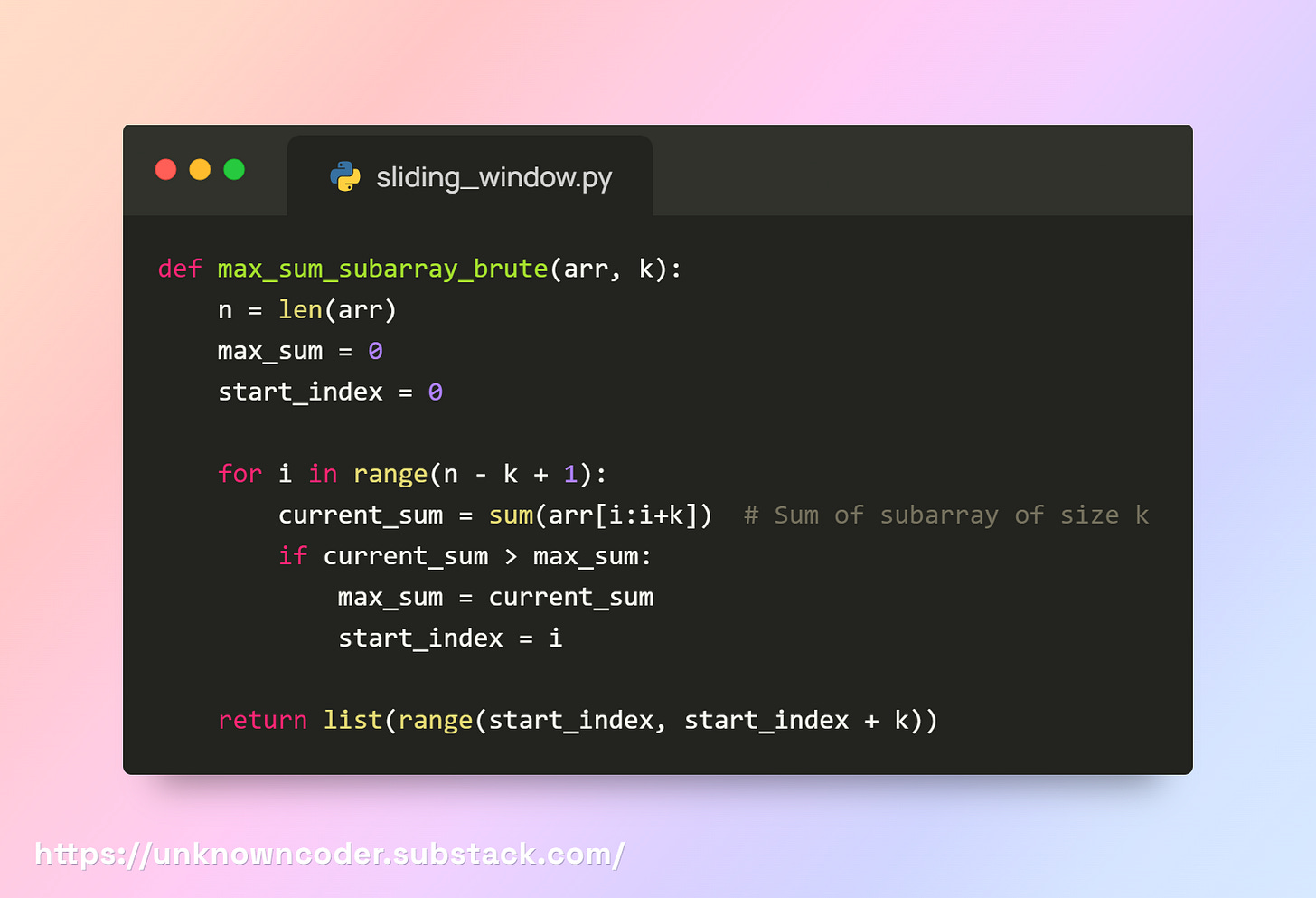Day 3: Mastering Sliding Window Beginner to Advanced
Levelling up with one of the most powerful DSA techniques
Sliding Window is a technique used to solve problems that deal with subarrays or substrings (continuous parts of an array or string).
Instead of checking every possible part one by one (which is slow), we keep a "window" that slides across the data.
Imagine you are looking outside through a window in your room.
You can only see a small portion of the street (not the whole street).
If you want to see the next part of the street, you slide the window frame to the right.
Now the view changes, but the window size stays the same.
This is exactly how Sliding Window works in programming:
Instead of checking the whole array/string again and again,
You look at a small portion (window) at a time,
And then slide it to cover the next portion.
🔑 Two Types of Sliding Window
When we talk about Sliding Window, there are mainly two patterns you’ll come across:
1. Fixed-size Window
Here, the window length is always constant.
We use two pointers:
leftandright.The distance between them is always fixed = k (right-left = k).
Whenever it
leftmoves forward by 1,rightalso moves forward by 1.So the window just slides step by step, always covering exactly
kthe elements.
Typical use: Find max/min/average of all subarrays of size k.
2. Variable-size Window
Here, the window is not fixed. It can expand or shrink depending on conditions.
We also use two pointers:
leftandright.Here, the distance is not fixed. It depends on conditions.
First, we keep moving
rightforward (expanding the window).If the condition breaks (like duplicates or sum too large), we move
leftforward (shrinking the window).So the window can grow or shrink dynamically until the condition is satisfied.
Typical use: Find longest/shortest subarray or substring under some rule.
Fixed-Size Sliding Window: A Meta’s Favourite Problem
Scenario:
You are a software engineer at Meta, working on Instagram Stories analytics.
Meta wants to analyse user engagement trends. You are given daily view counts for a user over n days. Your manager asks:
“Find the consecutive
kdays where the user was most active. Return the indices of these days.”
Input/Output Example:
views = [120, 80, 200, 150, 90, 300], k = 3
Output: [2, 3, 4]Explanation:
Maximum sum of 3 consecutive days = 440 (200+150+90)
The days with maximum views are indices 3, 4, 5 (1-based indexing).
Solution
Brute Force Approach
Idea:
Check every possible subarray of size
k.Calculate the sum for each subarray.
Keep track of the maximum sum and the starting index of that subarray.
Dry Run Example
arr = [120, 80, 200, 150, 90, 300], k = 3i = 0 → sum([120, 80, 200]) = 400 → max_sum = 400, start_index = 0
i = 1 → sum([80, 200, 150]) = 430 → max_sum = 430, start_index = 1
i = 2 → sum([200, 150, 90]) = 440 → max_sum = 440, start_index = 2
i = 3 → sum([150, 90, 300]) = 540 → max_sum = 540, start_index = 3
Output: [3, 4, 5] ✅
Time Complexity
O(n × k) → For each starting index, we sum k elements
Space Complexity: O(1) (ignoring output array)
Why this is not efficient:
For large arrays (n ~ 10⁵), recalculating the sum for every subarray is slow.
This is exactly where Sliding Window comes in to reduce it to O(n).
Optimal Sliding Window Code
Step-by-Step Dry Run
arr = [120, 80, 200, 150, 90, 300], k = 3Initial window
[120, 80, 200]→ sum = 400 → max_sum = 400, start_index = 0Slide window: remove 120, add 150 →
[80, 200, 150]→ sum = 430 → max_sum = 430, start_index = 1Slide window: remove 80, add 90 →
[200, 150, 90]→ sum = 440 → max_sum = 440, start_index = 2Slide window: remove 200, add 300 →
[150, 90, 300]→ sum = 540 → max_sum = 540, start_index = 3
Output: [3, 4, 5]
Complexity
Time Complexity - O(n)
Space Complexity - O(1)




